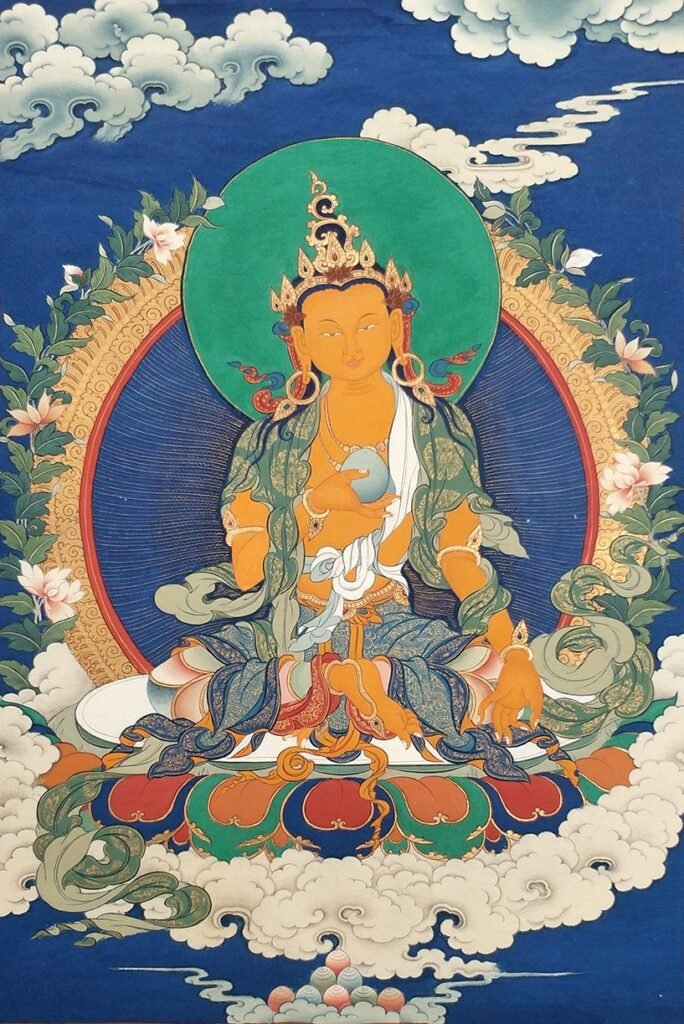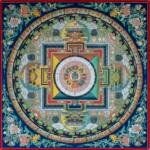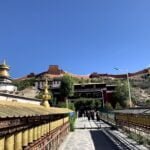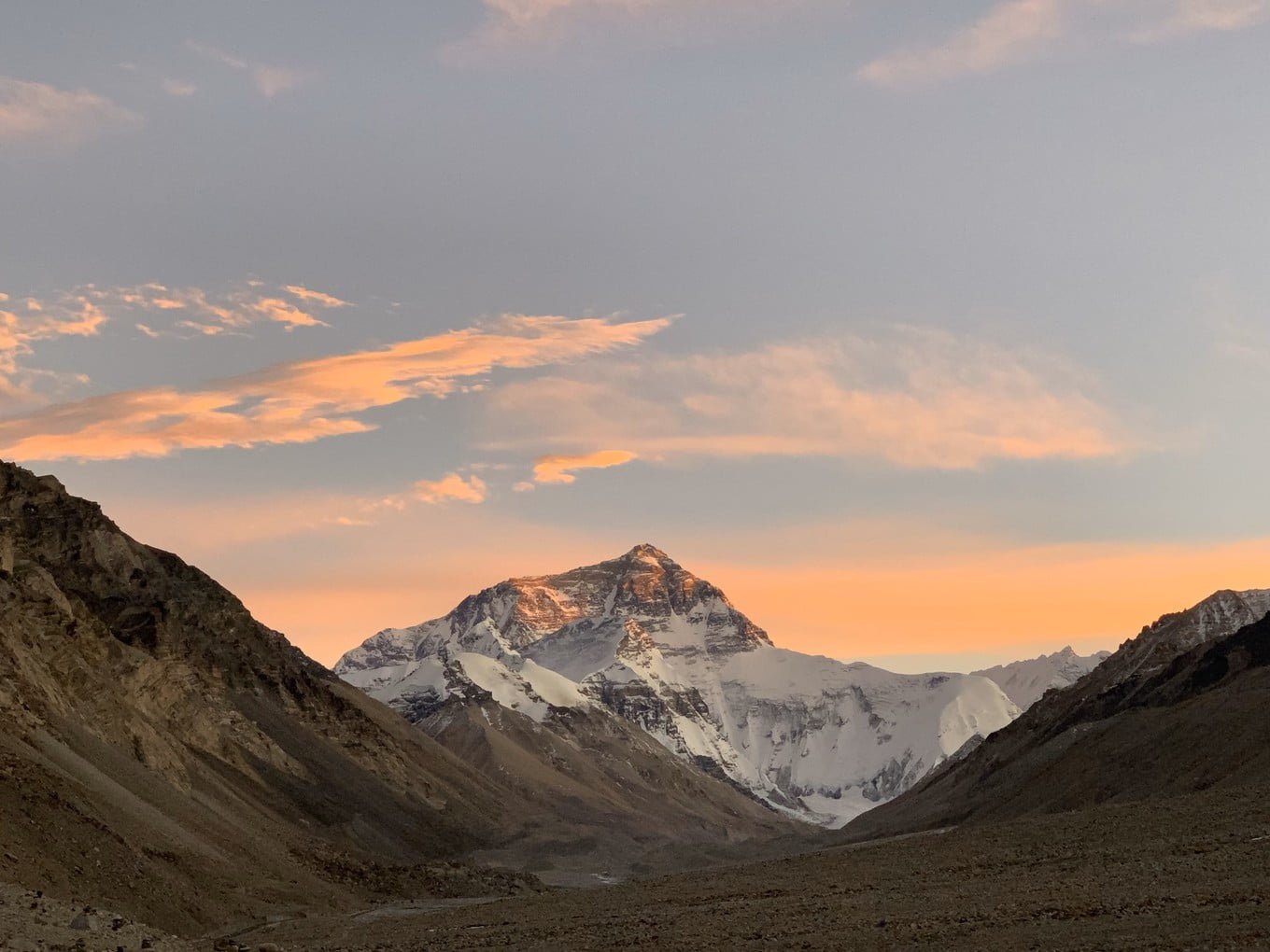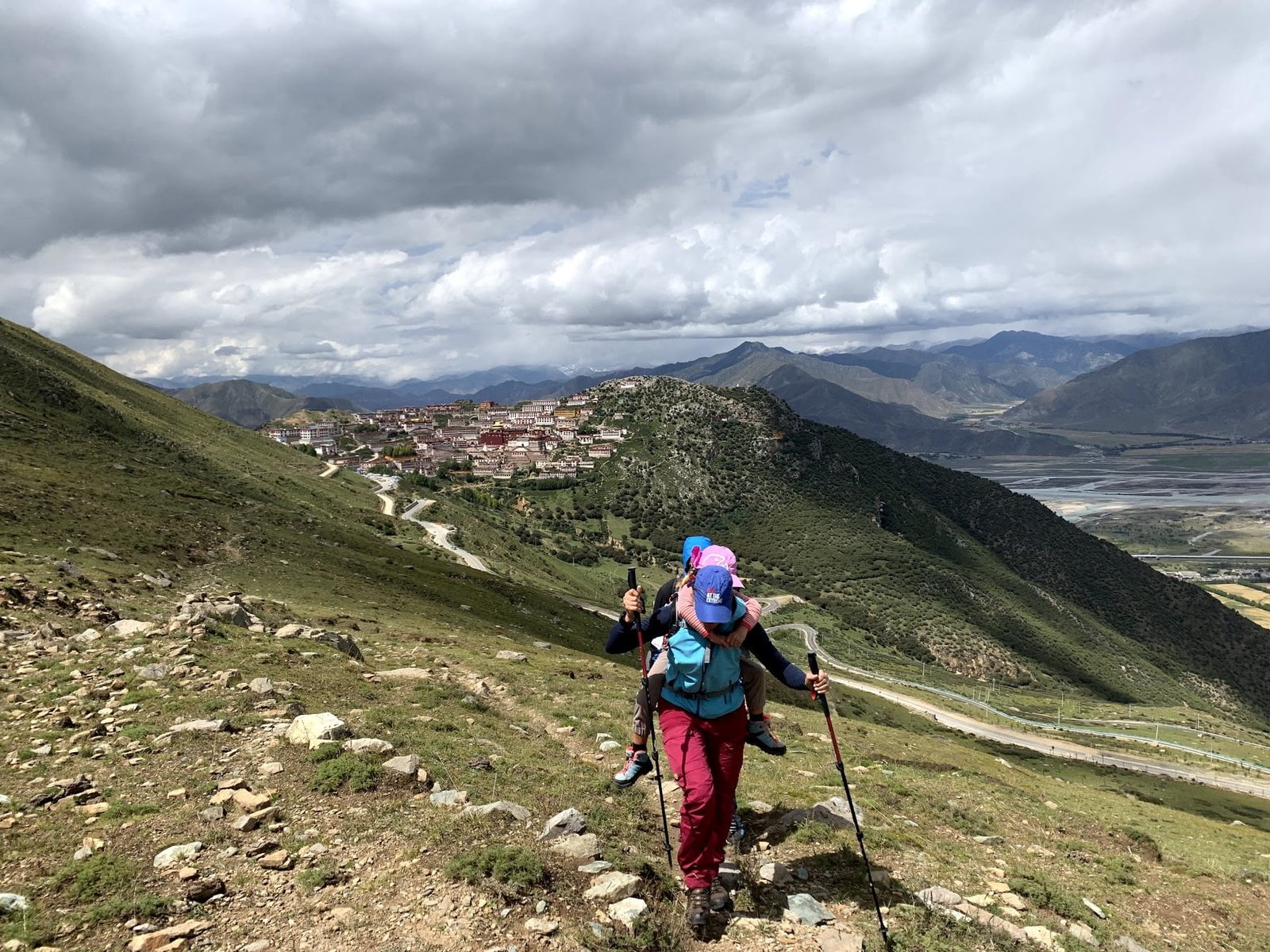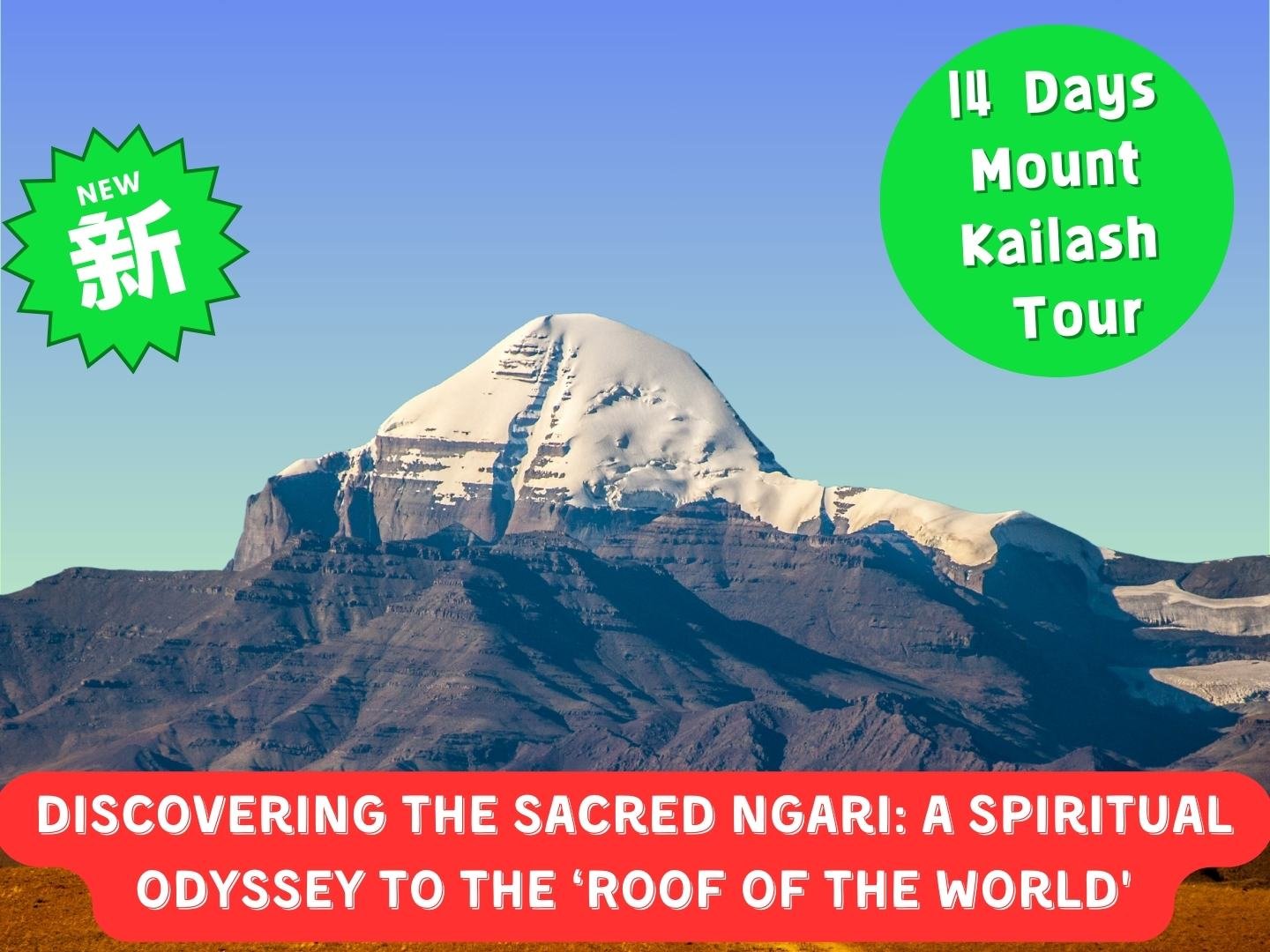In the early 12 century, the Mandala Sutra of the Eight Great Bodhisattvas, spoken by the Buddha, along with all the Sutras of the Great and Small Vehicles, were introduced to Tibet. These texts were translated by Xuanzang. In this particular sutra Evaṃ mayā-śrutam, there is a story of a bodhisattva named Candraprabha who resided in the palace of Bodhisattva on Potala Mountain. One day, Candraprabha approached the Buddha, bowing and clapping his hands together, and expressed his minor doubts. He only wished for the Tathagata to listen to his question.
Candraprabha (ཟླ་འོད་) asked, “If a person is virtuous, how can they achieve enlightenment by making eight mandalas? By what means can they attain immeasurable blessings?” The Bodhisattva urged the practitioners to quickly demonstrate their enlightenment. The Tathagata praised Candraprabha Bodhisattva, saying, “Well done, this question is profound. It brings immeasurable happiness and benefit to all beings and purifies the three realms of suffering. It proves your incomparable wisdom. Pay attention and listen carefully, only sentient beings who hear this secret teaching will have a long and meaningful life.”
Good men possess eight mandalas, which represent the profound teaching of the Eight Great Bodhisattvas. By establishing these mandalas in accordance with the law, one can eliminate all scriptures related to the ten evils and the five slanderous parties. Moreover, all aspirations for righteousness, benefit, and victory will be fulfilled. This is the secret message conveyed by the Tathagata.
When visiting temples, we often encounter numerous Bodhisattvas, some familiar with each other and some strangers. However, Buddhist statues primarily depict the eight Bodhisattvas ( ཉེ་བའི་སྲས་བརྒྱད་) from the “Eight Great Bodhisattva Mandala Sutra”: Manjushri, Avalokitesvara, Maitreya, Samantabhadra, Vajrapani, Sarvanivāraṇaviṣkambhin, Akashagarbha, and Ksitigarbha.
The full list of the eight are:
- Manjushri — embodies Buddha’s wisdom (prajna)
- Avalokiteshvara — embodies Buddha’s compassion (Karuna)
- Vajrapani — embodies Buddha’s power
- Maitreya — embodies Buddha’s activity (He is also the “Future Buddha”)
- Kshitigarbha — embodies Buddha’s merits and the “richness” derived from merits
- Samantabhadra — embodies the aspirations of Buddha and the practice of prayers and offerings.
- Sarvanivarana-Vishkambhin — embodies Buddha’s qualities and thereby purifies obstructions
- Akashagarbha — embodies Buddha’s blessings and thereby purifies negativities.
Manjushri embodies wisdom, while Avalokiteshvara represents compassion. However, all Eight Great Bodhisattvas embody both Karuna (Compassion) and Prajna (Wisdom).
Khenpo Chöga: The 8 Immeasurable Qualities of Bodhisattvas
“Among the immeasurable qualities of the Buddha, eight of his foremost qualities manifest as the eight bodhisattvas:
According to Khenpo Chöga
- 1) The embodiment of the Buddha’s wisdom is Bodhisattva Manjuśrī. ཡེ་ཤེས་ཀྱི་རང་གཟུགས་
- 2) Bodhisattva Avalokiteśvara represents the Buddha’s compassion. སྙིང་རྗེའི་རང་གཟུགས་
- 3) Bodhisattva Vajrapāṇi embodies the Buddha’s power or capacity. ནུས་པའི་རང་གཟུགས་
- 4) Bodhisattva Maitreya represents the Buddha’s activity. ཕྲིན་ལས་རང་གཟུགས་
- 5) Bodhisattva Kṣitigarbha embodies the Buddha’s merit. བསོད་ནམས་རང་གཟུགས་
- 6) Bodhisattva Sarvanīvaraṇaviṣkambhī represents the Buddha’s qualities.ཡོན་ཏན་གྱི་རང་གཟུགས་
- 7) Bodhisattva Ākāśagarbha embodies the Buddha’s blessings. བྱིན་རླབས་ཀྱི་རང་གཟུགས་
- 8) Bodhisattva Samantabhadra manifests the Buddha’s aspirations. སྨོན་ལམ་གྱི་རང་གཟུགས
Avalokitesvara – Ultimate Bliss
(Kuan Yin, Guanyin, Chenrezig) Bodhisattva, derived from the Heart Sutra and Lotus of the Good Law Sutra, is also referred to as Avalokitesvara Bodhisattva. Over time, the belief in Guanshiyin has undergone thirty-three transformations since the Tang and Song Dynasties. Tantric statues feature six Chenrezig statues and seven Guanyin statues. Additionally, the Holy Avalokitesvara known as Qiguanyin is included. Avalokitesvara statues come in various forms, such as one face with two arms, one with four arms, three with two arms, and three faces with eight arms.
Maitreya Bodhisattva
Maitreya Bodhisattva, mentioned in the Pali Buddhist scriptures, is the future Buddha according to the Mahayana Sutra. He was born into an Indian Brahmin family and attained enlightenment under Sakyamuni Buddha, who prophesied him as a Bodhisattva. Maitreya Bodhisattva is known as Cishi and Incompetence. He is a bodhisattva who lives his life and has the ability to fulfil the role of the Buddha.
In mainland China, he is depicted as a monk with a large exposed belly and a pleasant smile. However, in the Matrix Realm, he is portrayed with his left hand on his chest, palm open, his right hand holding a lotus, and a pagoda on his crown containing relics. In the Vajra World, he is depicted with the thumb, index finger, and little finger of his right hand upright, while the middle finger and ring finger are bent and placed on his chest, with his left hand resting on his knee.
Vajrapani Bodhisattva
Vajrapani comes from the Early Sutras. That is, Vajrasattva, also known as the Lord of Secrets, symbolizes “the firm and indestructible bodhicitta” and “worries are the truth of Bodhi”. In Esoteric Buddhism, this name refers to four things: one refers to the second ancestor of Esoteric Buddhism; the second refers to one of the thirty-seven statues of the Vajra World Mandala; the main statue among the seventeen statues; the fourth is the main statue of the “Tantric Deity” of the Mandala Tantrics in the Matrix Realm.
Akashagarbha
Akashagarbha comes from Ākāśagarbhasūtra Sutra. It means to hide the blessings in the imaginary and infinite realm, which means that the blessings can be produced and distributed infinitely. In the mandala of the Matrix Realm, the Bodhisattva is golden all over, with a solemn appearance, wearing a crown of five Buddhas on his head, sitting half-legged on a lotus, with a wonderful and joyful face, holding a white lotus in his left hand, with a wish-fulfilling orb on the flower, emitting yellow light, the right hand is knotted with the wish seal, the five fingers hang down, and the palm is turned outward.
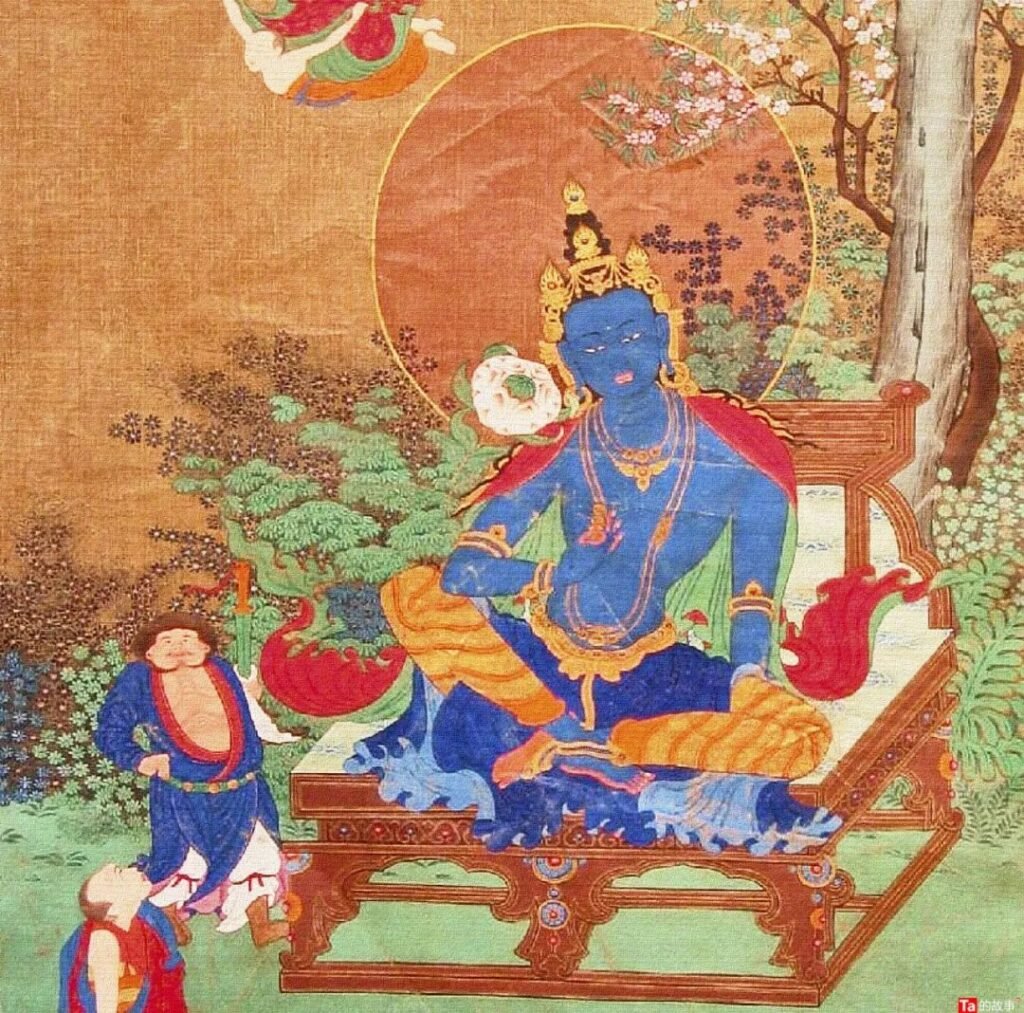
Samantabhadra
Samantabhadra comes from the Lotus Sutra, Buddhāvataṃsaka Sūtra, Lotus of the Good Law Sutra, and Flower Garland Sutra. It is a Bodhisattva who rides a white elephant and makes wishes. Samantabhadra in the ancient Indian language is called “Sammando Bhatra”, and Tantra is also called Puxian as Shanshe Vajra, Zhenru Vajra, and Wishful Vajra, and they are also regarded as the same body of Vajrasattva. It is said that Samantabhadra Bodhisattva is in charge of the principles, samadhis, and deeds of the Buddhas; Manjushri is in charge of the wisdom and virtues of the Buddhas. Samantabhadra Bodhisattva is generally regarded as the deity who prays for life extension.
Manjushri Bodhisattva
Manjusri Bodhisattva comes from the Vimalakirti Sutra, Flower Garland Sutra, and Prajnaparamita Sutras. Manjusri Bodhisattva is one of the four major Buddhist Bodhisattvas. He is not only the preacher of the Mandala in the Vajra Realm, but also the master of the Mandala Monastery in the Taizang Realm. There is also a special Manjusri Jiemo Mandala. Manjusri is the head of the Buddhist Ministry and practices as a deity. He has rich secret thoughts and is a symbol of wisdom. He is the head of all Bodhisattvas…
He was born in Savatthi, India, and later became a monk with Sakyamuni Buddha. He often accompanied Sakyamuni and helped him change his name. “Manjusri” means wonderful, and “Shili” means virtue and auspiciousness. Esoteric Buddhism calls it auspicious King Kong and Prajna King Kong. Manjushri Bodhisattva manages wisdom, opposite to Samantabhadra Bodhisattva. The image of Manjusri is generally riding a lion, with five buns on the top, representing the five wisdoms of the Great Sun, holding a green lotus in his left hand, with a Buddhist suitcase on the flower, and a Vajra sword in his right hand.
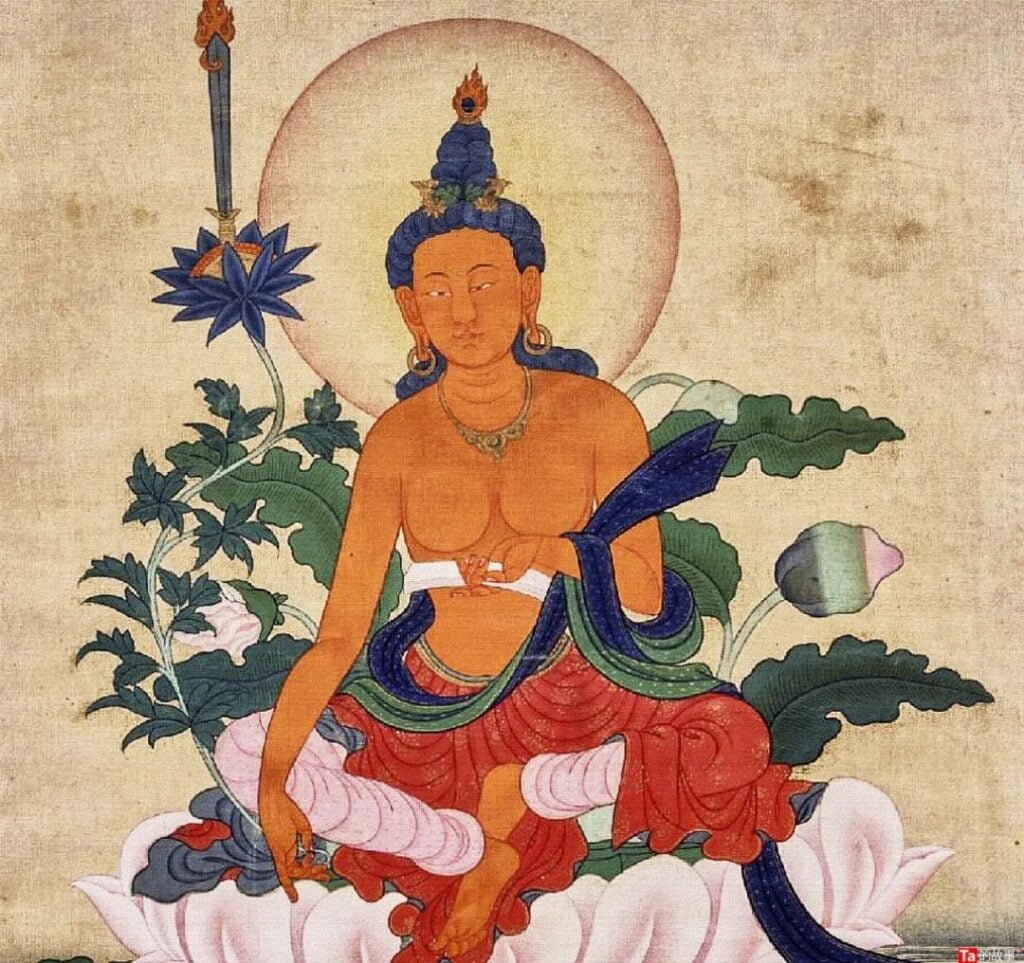
Sarvanivāraṇaviṣkambhin
Sarvanivāraṇaviṣkambhin is also known as the Bodhisattva of removing all obstacles, the Bodhisattva of surrendering all obstacles, and the Bodhisattva of abandoning all shades. The main statue of the Gaishangyuan. According to Buddhist scriptures, worshipping this bodhisattva devoutly can bring blessings and well-being to all living beings, relieve them from the suffering of samsara, and be reborn in the pure lands of the Buddhas of the ten directions. Its virtuous behaviour eliminates all obstacles of troubles, removes the barriers to the mandala of the fetus, and is also one of the sixteen statues of the mandala in the Vajra world.
Ksitigarbha Bodhisattva
Ksitigarbha Bodhisattva, (Sanskrit: Kshitigarbha) comes from the Earth Store Sutra. Esoteric Buddhism is also called Compassionate Vajra, Wishing Vajra or Vajra Building, because it is as unbearable as the earth, and it is as deep and secret as a secret treasure, so it is called Ksitigarbha. After Shakyamuni Buddha passed away and before Maitreya was born, Ksitigarbha Bodhisattva vowed to save all sentient beings in the six realms, and then vowed to become a Buddha; if he did not save all living beings, he vowed not to become a Buddha. Therefore, most of the statues of Ksitigarbha Bodhisattva are dressed in monks’ cassocks, holding a jewel in the left hand and a tin staff in the right.
